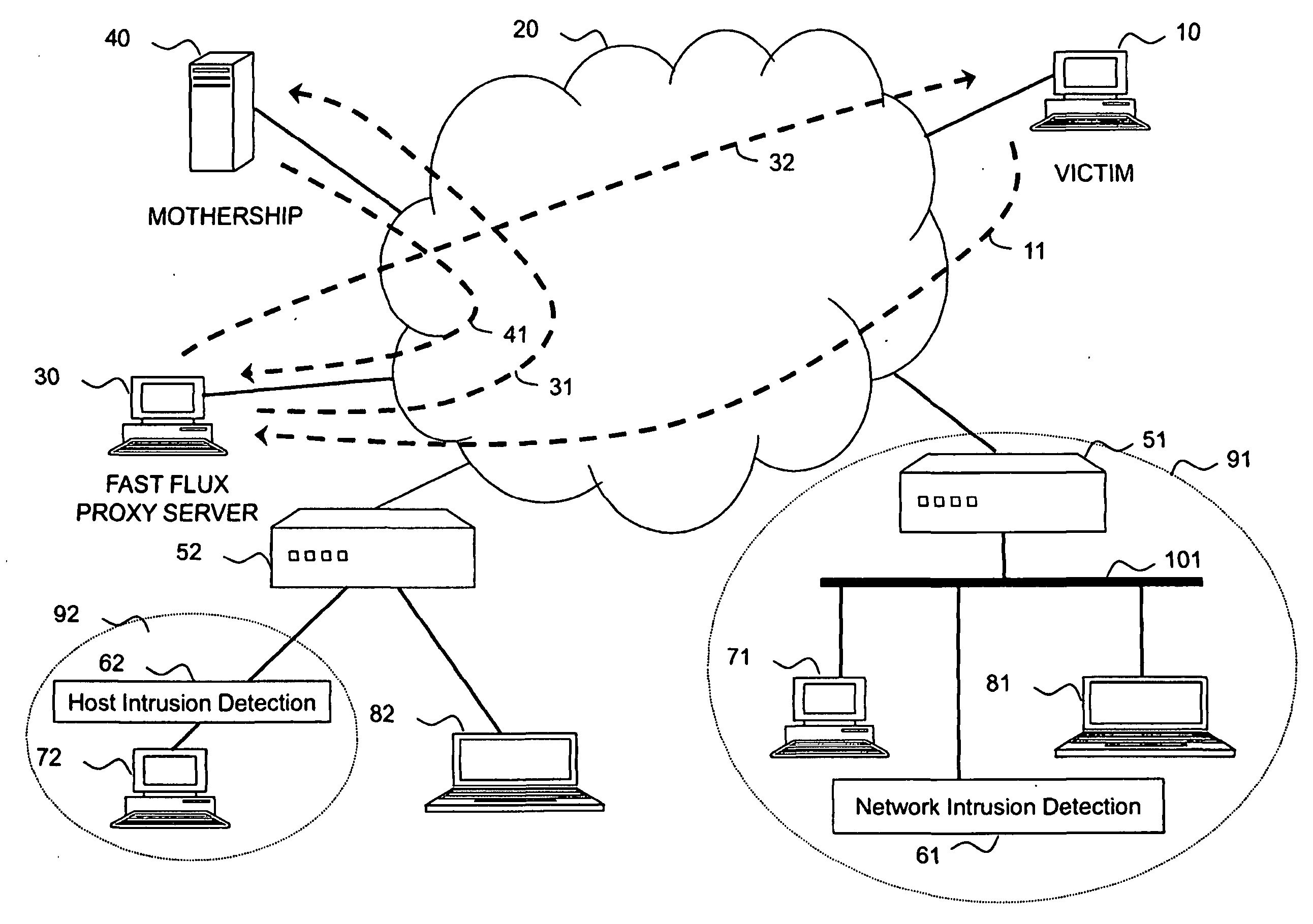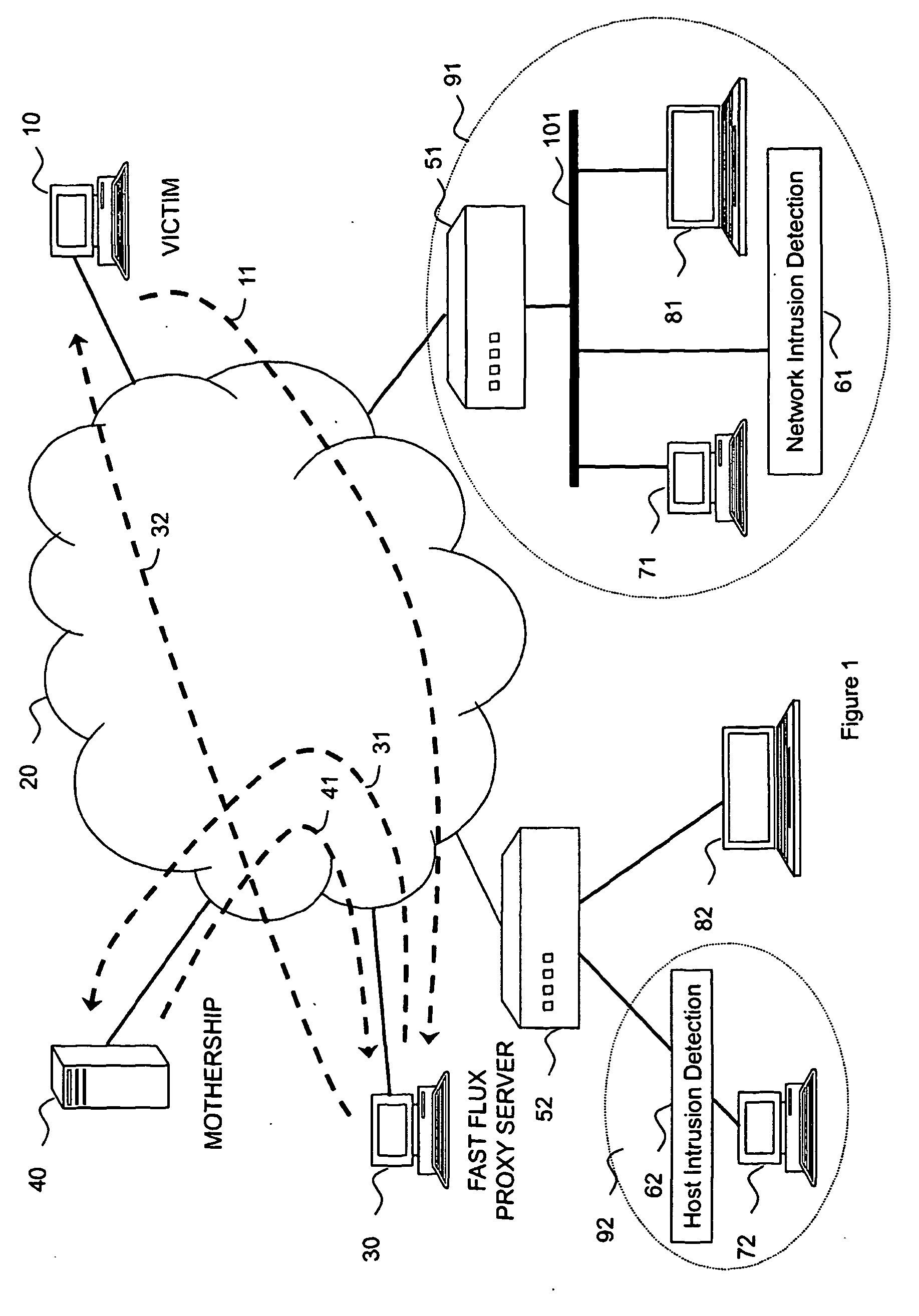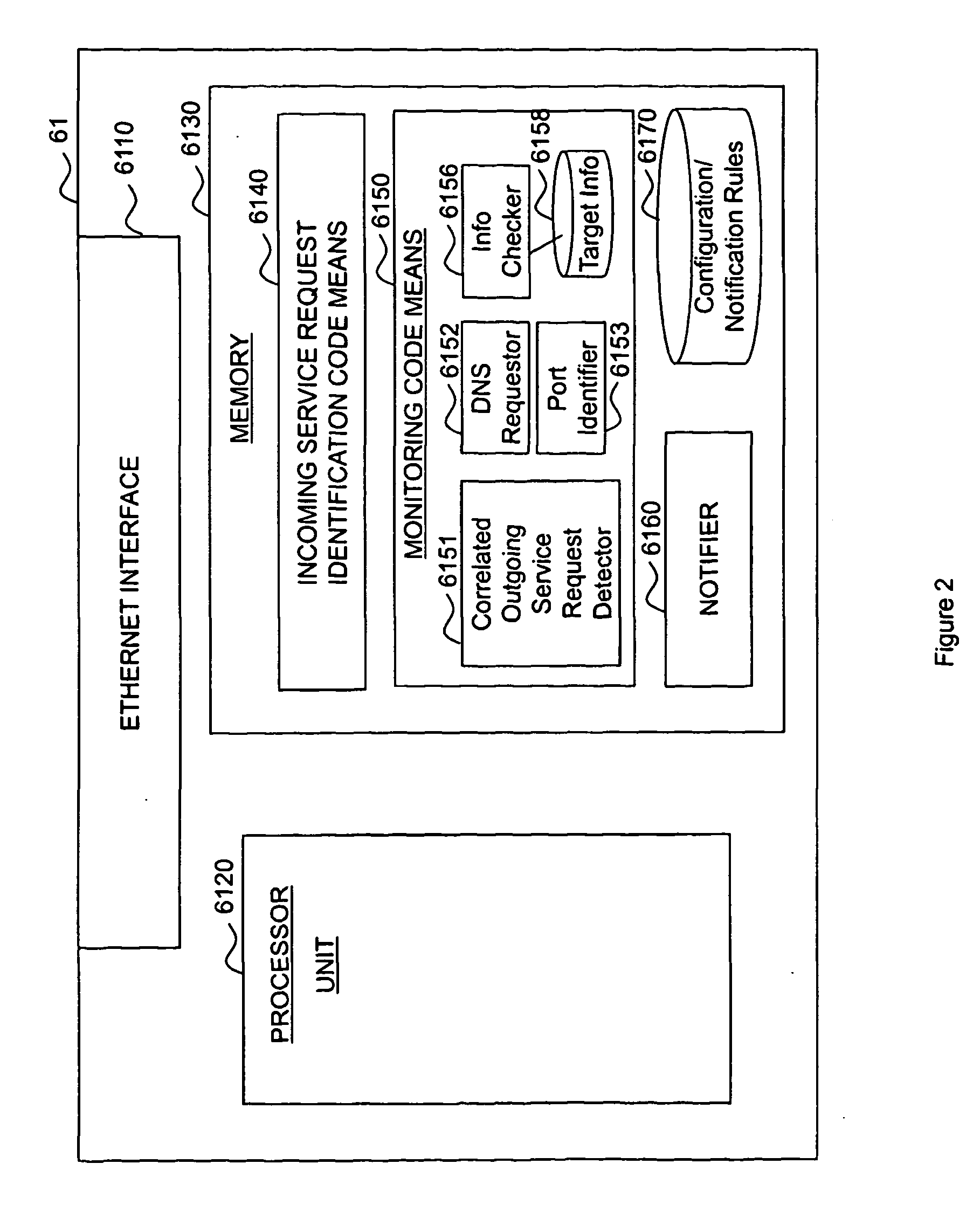[0013]A key
advantage of the present invention as set out above is that the size of the local network being covered can vary between a single computer (in which case the method is behaving very much like a sort of private firewall, but one which can be very permissive and thus is unlikely to be annoying to a user) or a large network comprising very many computers (e.g. within a single organisation) in which case the method is operating more along the lines of an enterprise firewall (and ideally it would be incorporated as part of the firewall). Alternatively, the method could be operated at an
access network level (e.g. monitoring all user devices connected to a particular DSLAM or local exchange, etc.) or at an
Internet Service Provider level (e.g. by monitoring all
client devices connecting through a particular
Broadband Remote Access
Server (BRAS). In such cases a blocking firewall would be completely unacceptable whereas an
intrusion detection system along the lines of the present invention could be employed since it could be used merely to inform users that they might be inadvertently harbouring some malicious
software on their devices.
[0014]Preferably, incoming traffic is monitored in real time (i.e. not as part of a
batch processing of stored network information) so that if behaviour indicative of a compromised device behaving as a fast flux
proxy server is detected in respect of a target device, then steps can be taken immediately to minimise the proxy activities of the suspected compromised device (e.g. by blocking incoming HTTP or DNS requests to the device, etc.). Furthermore, by looking initially for suspicious incoming requests only, the amount of monitoring to be performed can be reduced. Since additional monitoring of outbound requests (which would be expected to form the bulk of such traffic for normal, non-
server, end-user host devices) only needs to be undertaken in respect of devices for which some suspicious incoming requests have been received, the total amount of monitoring which needs to be performed can be maintained at reasonable levels.
[0015]The most preferred further steps to take may depend upon the size of the local network being monitored as well as the relationship between the party controlling the monitoring and the party controlling the device(s) being monitored. For example for a host
intrusion detection system where just a single device (having a single user who is also the sole administrator for the device) is being monitored and the person in charge of configuring the
intrusion detection system is the same as the administrator of the device, then the user / administrator of the device can directly control what further action should be taken (e.g. dropping any suspicious seeming proxy request messages and alerting the user to the arrival of such requests). For larger networks, it may be more appropriate to simply send some kind of notification (e.g. by email) to the user of the target device to advise that they may have a fast flux proxy
server running (probably unbeknownst to them) on their device and that they can take certain steps to ascertain if this is actually the case and if so what further steps they can take to remove the malicious
software and to prevent similar malicious software from getting back onto their device once the current
infestation has been removed. If the local network is for a
corporate network it may be that it would be appropriate for such steps to merely be taken automatically by the administrator of the network where the target device is a corporate device (and therefore ultimately the responsibility of the
network administrator rather than the user).
[0016]Monitoring the behaviour of the target device may include monitoring the outbound IP traffic from the target device to see if it appears to be generating HTTP requests in response to any incoming (proxy) HTTP requests. In the simplest case one would expect a proxy request to take the standardised proxy request form (e.g. including the full “URI path” in the request line rather than just the “absolute path”) and so such a request could be viewed as suspicious. In more deceptive cases the request may appear as a direct request and yet still be proxied by the malicious proxy server device being harboured inadvertently by the
user device. There are a number of fairly simple steps that may be taken automatically by the intrusion detection
system (especially in the case where an ISP is monitoring a large number of customer devices, some of which could be acting as perfectly legitimate web servers or even legitimate proxy servers) upon
receipt of an http GET request (whether in the proxy GET format or formulated as a direct GET request).
[0017]These include 1) looking to see if incoming get requests generate corresponding outgoing get requests, 2) performing periodic DNS lookup requests for the host specified in the get request, 3) examining the request to see if it specifies an unusual port number, and 4) checking if there is any relevant stored information about the target device.
[0018]Strategy 1) above can be useful either in the case that the get requests are simply ignored by the target device—in that case it is likely that they are simply spurious or malicious but unsuccessful attempts on the target device which (since it is simply ignoring the requests) is not running any malicious software—it may for example be that it has recently removed some malicious software successfully, but that the bot net has not yet realised that this is the case. Strategy 1) can also identify
suspicious behaviour if it correlates incoming direct GET requests with outgoing GET requests. If it were behaving as a completely open and correct proxy server a normal compliant
client should be sending correctly formatted proxy GET requests to it, not direct GET requests. If correlated outgoing GET requests are detected, these could prove useful in tracking down the actual
IP address of the mothership of a bot net and so can provide useful information to ISP's etc.
 Login to View More
Login to View More  Login to View More
Login to View More 


